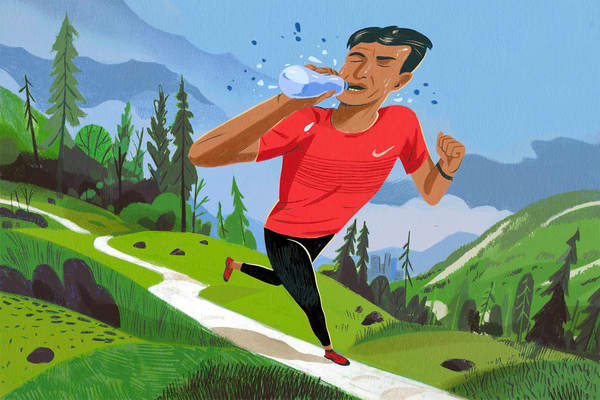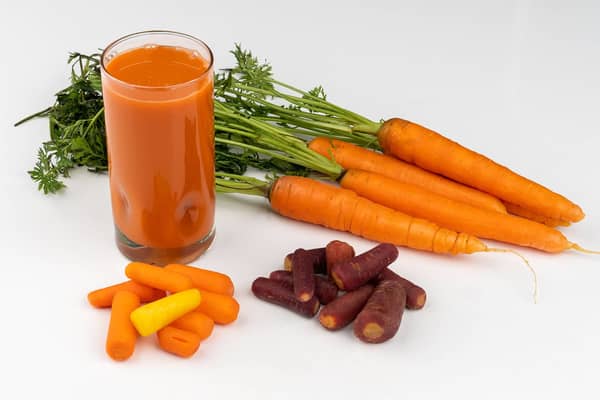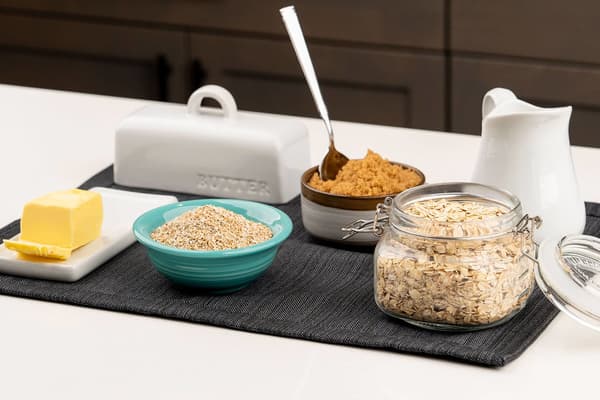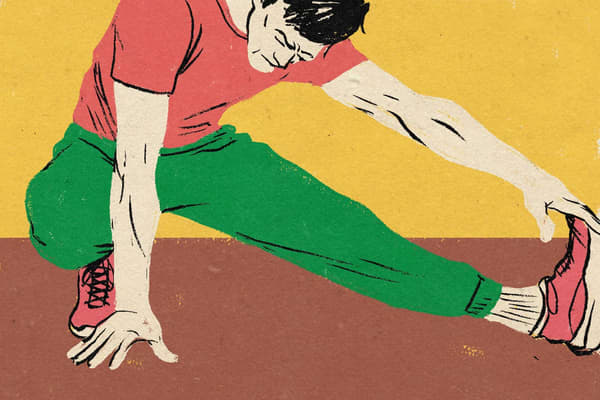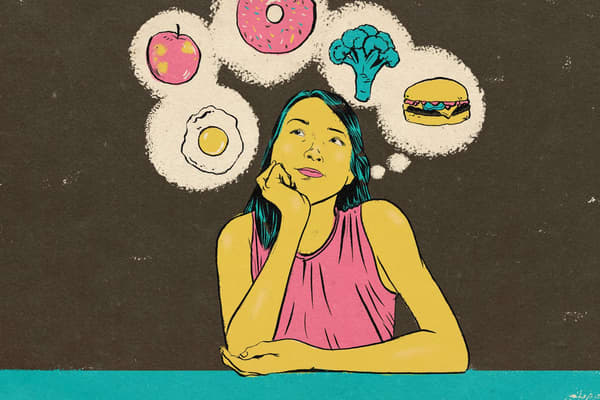What Is an Iron Deficiency and How Do I Know If I Have It?
Nutrition
A registered dietitian explains the symptoms of iron deficiency and how and when to take action.

Have you ever felt totally exhausted after doing what you considered to be a moderate workout? Or maybe you can relate to feeling like you're not physically able to finish a rigorous workout that you would normally crush. If either of these sound familiar, you might have low iron levels.
First, what is iron?
Iron is a mineral that's critical to overall health and well-being. It's found naturally in many foods (that you probably eat daily!) and added to some foods during processing. Consuming adequate amounts of iron is vital for optimal brain health, hormone production, cell functioning, immunity and physical growth and repair.
But what makes iron such an essential part of our diets, anyway? For starters, it plays an essential role in red blood cell function. Iron assists in the transfer of oxygen from the lungs to tissues. Also a critical component of myoglobin (i.e. the protein responsible for carrying oxygen in muscle cells), iron supports muscle metabolism and healthy connective tissues.
For athletes and those who are active, ideal oxygen transport and energy production is key for getting through a lengthy training cycle, tough workouts and competitions. According to the Institute of Medicine's Dietary Reference Intakes for the US, most adult males need roughly 8mg of iron daily; it gets more nuanced for females. For example, for females aged 19–50, the requirements are 18mg per day and requirements decrease to 8mg of iron per day after the age of 50.
Although there are no specific requirements set for athletes, a 2015 research review published in the Journal of the International Society of Sports Nutrition found that endurance athletes, especially females, might require more iron than males due to menstruation, in addition to a host of other exercise-induced mechanisms (think increased sweating, higher calorie needs and exercise-induced stress). In fact, according to the Food and Nutrition Board, iron needs for endurance athletes might be as much as 30 percent higher than for the average healthy adult.
What is iron deficiency?
Iron deficiency occurs when you don't have enough healthy red blood cells in your body. The most common reason for iron deficiency, simply put, is supply not meeting demand. Iron is found in food in two different forms: heme and non-heme iron. Heme iron is found in animal foods with some of the richest sources including beef, oysters, clams, chicken, liver and tuna. Non-heme iron is often found in plant foods—some of the best sources include spinach, tofu, white beans and lentils.
But not all iron is created equal. Iron intake for vegans and vegetarians may be just as high as meat eaters, but the amount of iron absorbed may be much lower.
Researchers reported in a 2014 review published in the Journal of Trace Elements in Medicine and Biology that daily iron loss may be higher for runners as a result of exercise-induced inflammation, increased sweating, increased gastrointestinal bleeding and damage done to red blood cells from continued foot striking. Iron loss due to foot striking is as simple as it sounds: when the foot repetitively hits the ground, red blood cells can break down, which in turn can impact iron levels. Theoretically, running on a softer surface would prevent as much damage; however, more research is needed to prove that different running surfaces or shoes could help with iron loss.
Other causes of iron deficiency include heavy menstruation, coeliac disease, Crohn's disease or ulcerative colitis.
What are symptoms of iron deficiency?
As is the case with just about any condition, the signs and symptoms of iron deficiency can vary from person to person. Typically, deficiency happens in three stages. In the first stage, iron stores are depleted, but you may not notice anything different. If iron loss continues—or if your intake of the mineral doesn't improve—that's when you may begin to notice symptoms. This first stage can be detected through a blood test, with results showing low ferritin levels (a protein that helps store iron in your cells).
In the second stage, there will be a decrease in iron transporting throughout the body, and in the third stage, haemoglobin will drop due to the reduction of iron. This final stage results in anaemia, as noted in the 2014 review paper. In the second and third stages of deficiency, you may notice a range of different symptoms varying from lethargy to irritability, and even the inability to concentrate. As explained in an article published in a 2001 issue of the Journal of Nutrition, in addition to these symptoms, more physical sensations include rapid heart rate, palpitations and heavy breathing during exertion.
As iron deficiency progresses through the stages, athletes and active individuals will begin to experience different effects on their performance. The ability to get through seemingly easy cardio or strength workouts may dwindle, and the effects of training might even become impaired. A 2019 review published in the European Journal of Applied Physiology explained the effects of iron deficiency. Low iron interferes with the body's ability to optimally transport oxygen to the muscles. This causes a greater demand on anaerobic metabolism (the breakdown of carbohydrates and fat for energy when oxygen isn't available). And the muscles' glycogen stores (carbohydrates that are stored in the muscles and used for energy during physical activity) will deplete faster than usual.
Though these symptoms may be vividly apparent in some, the only way to know if you have an iron deficiency is to get a blood test. Early detection is ideal in order to prevent impaired performance and impairment to overall well-being. The 2019 review done in the European Journal of Applied Physiology suggested that for those with no symptoms or history of iron deficiency, it's fine to get tested annually; however, for individuals who are at risk, blood tests should be done at least twice a year. And as a quick reminder, people who are at risk of this mineral deficiency include vegans, vegetarians, females with irregular menstrual cycles, anyone with a past history of iron deficiency or unexplained levels of fatigue (despite adequate rest) and endurance sports participants (such as those who do long-distance running).
Can you prevent iron deficiency?
If you don't have any underlying health conditions linked to iron deficiency, keeping levels in the healthy range is usually attainable by eating a complete, balanced diet. So, how do you make sure your iron consumption is adequate? You'll want to include animal proteins, vegetables and a variety of grains at mealtime. For vegetarians, meeting those daily iron needs through food alone might be more challenging—but it can be done.
For example, it's been well established through research that consuming vitamin C with plant-based iron can help the body absorb and use it as noted in a 2020 review paper in the Nutrients Journal. So, when you're eating a meal, consider including vitamin C, ideally from whole foods such as peppers and citrus fruits. Those who are cooking at home can also get a small amount of iron by using a cast-iron frying pan. But bear in mind, whether you're consuming heme iron (animal-based) or non-heme iron (plant-based), it's best to avoid coffee, dairy or tea at least one hour before and after eating a meal that contains iron, since these foods and beverages can interfere with your body's ability to absorb iron.
RELATED: The Benefits of Drinking Coffee Before and After Working Out, According to Experts
If you are diagnosed with iron deficiency, your doctor may recommend increasing your dietary intake of iron or even taking an iron supplement. Vegetarians also may notice improvements in their iron levels by including some animal protein in their diet, which could avoid the need for supplementation.
As always, it's best to speak with your doctor or with a registered dietitian to help create a diet to improve iron levels or to choose an iron supplement. Some supplements are better tolerated than others (such as liquid iron versus pills). Some common complaints of iron supplementation can include constipation, stomach pain and nausea. If you are taking a supplement, make sure you take it with food and preferably those that are a good source of vitamin C.
Words by Sydney Greene, MS, RDN
For more expert-backed nutrition advice, be sure to download the Nike Training Club App!

